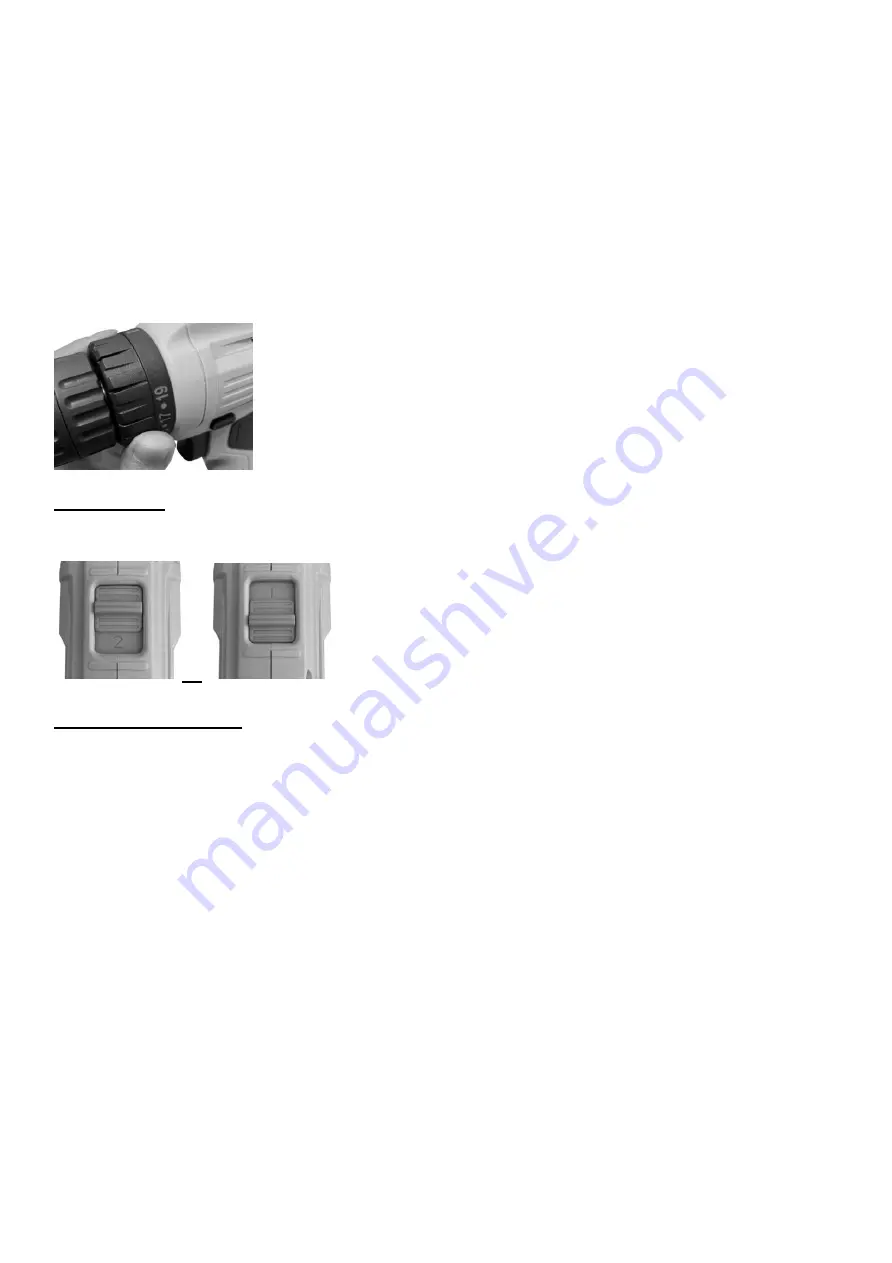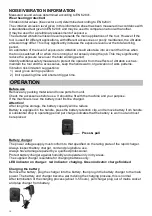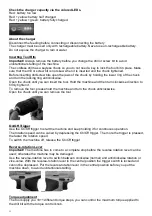
12
Attention!
The torque control knob should only be operated when the machine is not running;
otherwise the machine may be damaged.
To set the drill to the lowest available torque setting, twist the torque control knob until the small
arrow on the drill-housing points
to the “1” stamped on the torque control knob. In this position the
torque clutch will slip with light drilling resistance. The higher the number the arrow points to on the
torque control knob, the larger the maximum torque that can be applied before the torque clutch
will slip.
To set the machine to maximum available torque twist the torque control knob until the arrow
points to the drill symbol. In this position there is no slip in the torque clutch.
Select a lower torque for insertion/removal of screws to avoid damage to the work-piece (in
particular wooden work-pieces) or to the screw. For drilling select a higher torque setting. Do a test
first on an item which is not your final work-piece and adjust the desired torque accordingly before
you start the actual work.
2-gear speed
The speed can be adjusted by the 2-gear speed button between a high speed 0-1400/min ( Fig. A )
or a lower speed 0-375/min ( Fig. B )
Operation for working
Only use tool bits which can be securely fastened in the chuck and for which the drill has been
designed.
1. Drilling
Check whether the drill bit is correctly inserted and tightly fastened before you start the machine.
Use properly sharpened drill bits. At the start of each drilling operation select a lower speed. For
large holes drill with a smaller drill bit first and then enlarge the hole using a larger drill bit.
2. Drilling in wood
For drilling in wood use a wood drill-bit. Protect or fasten the work-piece in a suitable holder. Mark
the positions of the holes to be drilled with a sharp tool or a nail. Do not apply excessive pressure
against the work-piece with the machine.
3. Drilling in metal
For drilling in metal use a steel drill-bit. Protect or fasten the work-piece with a suitable holder. The
work-piece should lie flat on the work bench. Mark the positions of the holes to be drilled with a
centre-punch. Do not apply excessive pressure against the work-piece with the machine. Allow the
drill to operate at its normal operating speed.
Important!
At the start of drilling select a lower speed to avoid the bit slipping away from the
desired hole location. If the drill-hole is deep, the drill-bit may become jammed in the hole. In this
event a high torque could damage the drill bit or the drill. If the bit becomes jammed, hold the
Fig. A
Fig. B



































